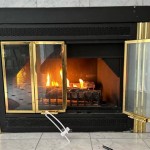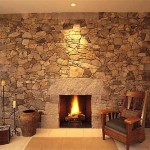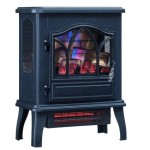Small Electric Fireplace Heaters: A Practical Guide
Small electric fireplace heaters offer a convenient and efficient method for supplemental heating, particularly in smaller rooms or apartments. These devices mimic the aesthetic appeal of a traditional fireplace without the need for complex installations, venting, or fuel storage. They operate on electricity, providing heat through various methods, and contribute to a cozy atmosphere with simulated flames. Understanding the features, benefits, and considerations associated with small electric fireplace heaters is crucial for making an informed purchasing decision and ensuring safe and effective use.
The growing popularity of these heaters stems from their versatility and ease of use. They can be placed in virtually any room with an electrical outlet, offering targeted warmth where it's needed most. Furthermore, advancements in technology have led to increasingly realistic and customizable flame effects, enhancing their visual appeal. This article will delve into the key aspects of small electric fireplace heaters, covering their functionality, types, safety features, and factors to consider before buying.
Understanding the Heat Generation Methods
Small electric fireplace heaters utilize different technologies to generate heat. The most common methods include: resistance heating, infrared heating, and fan-forced heating. Each method offers distinct advantages and disadvantages regarding heating speed, efficiency, and heat distribution.
Resistance Heating: This is the most traditional method. It involves passing an electric current through a heating element, typically a metal coil or wire. As the current flows, the element heats up, radiating warmth into the surrounding area. Resistance heating is generally effective for heating small spaces quickly. However, it can be less energy-efficient compared to other methods, as a significant portion of the energy is converted into heat that dissipates into the air. The heat tends to be more localized, meaning the areas closest to the heater receive the most warmth while those further away may remain cooler.
Infrared Heating: Infrared heaters utilize infrared radiation to directly heat objects and people in the room, rather than heating the air itself. This method is often described as being more efficient than resistance heating because it reduces the loss of heat to the surrounding air. Infrared heaters emit electromagnetic radiation in the infrared spectrum, which is absorbed by surfaces and converted into heat. This results in a more targeted and direct heating experience. While infrared heaters are effective at warming objects and people within their range, they may not be as effective at heating the entire room, especially in larger spaces.
Fan-Forced Heating: Fan-forced heaters combine a heating element (usually resistance-based) with a fan. The heating element warms the air, and the fan circulates the heated air throughout the room. This allows for more even heat distribution compared to simple resistance heating. Fan-forced heaters are generally effective at quickly warming a room and maintaining a consistent temperature. They can, however, be slightly noisier than other types of heaters due to the operation of the fan. Also, they might stir up dust and allergens, which can be a concern for individuals with respiratory sensitivities.
The choice of heating method depends on individual preferences and the specific heating needs of the space. Consider the size of the room, desired heating speed, energy efficiency, and any potential sensitivities to noise or dust when selecting a small electric fireplace heater.
Key Features and Functionality
Small electric fireplace heaters offer a range of features designed to enhance their functionality and user experience. These features often include adjustable thermostat settings, flame effect customization, remote control operation, and safety mechanisms. Understanding these features is crucial for selecting a heater that meets personal needs and preferences.
Adjustable Thermostat Settings: A precise and adjustable thermostat is a fundamental feature of most electric fireplace heaters. This allows users to set the desired room temperature, enabling the heater to automatically turn on and off to maintain that temperature. Thermostat settings often range from low to high heat, with some models offering specific temperature settings in degrees Celsius or Fahrenheit. A well-calibrated thermostat ensures consistent and comfortable heating without excessive energy consumption.
Flame Effect Customization: The visual appeal of electric fireplace heaters is largely attributed to their simulated flame effects. Modern models offer a variety of customization options, allowing users to adjust the flame color, brightness, and speed. Some models even feature multiple flame settings, simulating different types of fires. These customization options enhance the aesthetic appeal of the heater and allow it to blend seamlessly with various décor styles. Advanced flame effects often incorporate LED lighting and reflective materials to create a realistic and captivating visual experience.
Remote Control Operation: Remote control operation adds a layer of convenience to electric fireplace heaters. It allows users to adjust thermostat settings, flame effects, and power on/off the heater from a distance. This is particularly useful for controlling the heater from across the room or when mobility is limited. Remote controls typically include basic functions, such as temperature adjustment and flame control, with some models offering more advanced features, such as timer settings and pre-set heating programs.
Safety Mechanisms: Safety is a paramount concern with any heating appliance. Small electric fireplace heaters are typically equipped with multiple safety mechanisms to prevent overheating and potential fire hazards. The most common safety feature is an automatic shut-off mechanism that activates when the heater reaches an unsafe temperature or is accidentally tipped over. Overheat protection prevents the heater from exceeding its maximum operating temperature, reducing the risk of fire. Tip-over protection automatically shuts off the heater if it is knocked over, preventing it from continuing to operate in an unsafe position.
Considering these features ensures that the selected electric fireplace heater not only provides efficient heating but also offers a safe and user-friendly experience. Evaluating the adjustability of the thermostat, the realism of the flame effects, the convenience of remote control operation, and the robustness of the safety mechanisms will contribute to a more satisfying and secure heating solution.
Factors to Consider Before Purchasing
Selecting a small electric fireplace heater involves careful consideration of various factors to ensure it meets specific needs and preferences. These factors include room size and heating requirements, energy efficiency and operating costs, design and aesthetic appeal, and safety certifications and standards.
Room Size and Heating Requirements: The size of the room to be heated is a critical factor in determining the appropriate heating capacity of the electric fireplace heater. Heaters are typically rated in terms of British Thermal Units (BTUs) or wattage, indicating their heating power. A general guideline is that 10 watts of heating power are required per square foot of room space. For example, a 150-square-foot room would require a heater with approximately 1500 watts of heating power. It is important to select a heater that is adequately sized for the room to ensure efficient and effective heating. Overestimating the heating capacity can lead to unnecessary energy consumption, while underestimating it may result in inadequate heating.
Energy Efficiency and Operating Costs: Electric fireplace heaters can vary in their energy efficiency, which directly impacts their operating costs. Look for models with energy-saving features, such as adjustable thermostat settings, programmable timers, and energy-efficient heating technologies (e.g., infrared heating). Check the heater's energy efficiency rating or Energy Star certification, if available. Consider the average cost of electricity in the area and the expected usage patterns to estimate the potential operating costs. While initial purchase prices may vary, selecting a more energy-efficient model can result in long-term cost savings.
Design and Aesthetic Appeal: Electric fireplace heaters are available in a wide range of designs and styles to complement different décor preferences. Options include freestanding models, wall-mounted units, and insert models that can be integrated into existing fireplaces. Choose a design that blends seamlessly with the existing room décor and architectural style. Consider the color, material, and overall aesthetic of the heater to ensure it enhances the visual appeal of the space. The realism and customization options of the flame effects also play a significant role in the overall aesthetic experience.
Safety Certifications and Standards: Ensure that the electric fireplace heater meets relevant safety certifications and standards. Look for certifications from reputable organizations, such as UL (Underwriters Laboratories) or ETL (Intertek Testing Services), which indicate that the heater has been tested and meets established safety requirements. These certifications provide assurance that the heater has been designed and manufactured to minimize potential hazards, such as overheating and electrical shock. Verify that the heater includes safety features, such as automatic shut-off mechanisms and tip-over protection, as discussed previously. Prioritizing safety certifications and features is essential for ensuring the safe operation of the electric fireplace heater.
By carefully considering these factors, prospective buyers can select a small electric fireplace heater that adequately meets their heating needs, complements their décor, operates efficiently, and adheres to strict safety standards. A well-informed purchase decision will result in a comfortable, aesthetically pleasing, and safe heating solution.

Lifeplus Electric Fireplace Heater Freestanding Stove With 3d Realistic Flame For Indoor Home Safe Use 750w 1500w 17 Com

Ktaxon 1400w Small Electric Fireplace Indoor Free Standing Stove Heater Fire Flame Adjustable Com

Homcom 26 Electric Fireplace Stove 1400w Freestanding Heater With Adjustable Temperature Overheat Protection Remote Control Timer 7 Brightness Settings White Aosom

Etokfoks 1000 Watts 8 In White Electric Space Heater Small Fireplace Fan With Overheat Tip Over Protection Mlsa04 1lt009 The Home Depot

1000w Mini Wall Mounted Electric Fireplace Indoor Space Heater Simulated Flame

Electric Fireplace Heater 1500w Portable Compact Freestanding Stove For Indoor Black Retro Style Space W Realistic Flame Effect Com

25 Inch Freestanding Electric Fireplace Heater With Realistic Flame Effect Costway

Reviews For Comfort Zone 1 200 Watt Mini Ceramic Fireplace Electric Heater With Simulated Flame In Red Pg The Home Depot

E Flame Usa Hamilton Indoor Compact Freestanding Electric Fireplace Space Heater Realistic 3 D Wood Burning Matte Black White Free Standing

8 Best Electric Fireplace Heaters In 2024 Infrared Fireplaces
Related Posts








